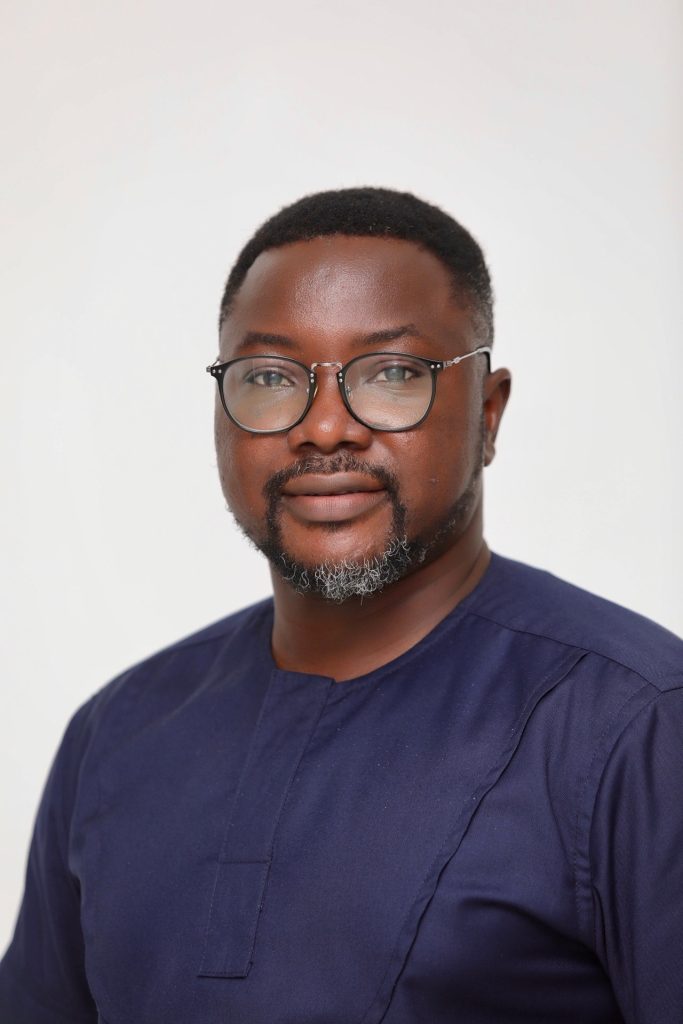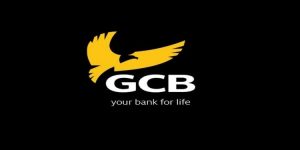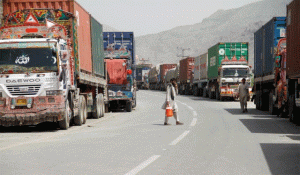The mining industry in Ghana has been around for a long while yet its local content and local participation architecture are not significantly different from the oil and gas, if not worse. Industry experts believe it is the imperious foreign-dominated experiences in the mining sector that informed the promulgation of the local content law in the petroleum sector to ensure participation by indigenous Ghanaians in the sector.
It is for this reason that ‘Turning the white space into blue’ and the story behind should be of interest to all well-meaning Ghanaians interested in tracking how young indigenous locals are blazing the trail in a sector dominated by ex-pats, a sector that holds the key to turning the economic fortunes of our country.
One such figure making all the headlines albeit in the dark is Cephas Konadu, an old student of Accra Academy. Cedidollar.com had a short interview with him about his exploits in the oil and gas sector and most recently in the mining sector as well. Enjoy reading.
Q. What is your track record in the oil and gas sector before going into the mines
A. I started [my career] in the oil industry in the late 2000s. I did my National Service at the Tema Oil Refinery (TOR) from 2007 – 2008. After my service, I joined a Nigerian Company called Geo-fluids International, where I served as a Mud Engineer for about two years.
After Geo-fluids, I joined Schlumberger in January 2011, where I started as a Junior Measurements and Logging Engineer, a role I executed for about three years [2011-2014]. This took me to several countries including, Nigeria, Cameroon, Sierra Leone, Liberia, Guinea, Senegal, Mauritania, Ivory Coast and Tanzania.
In 2014, after going through the ranks and fulfilling all requirements, I got a promotion to be General Field Engineer (GFE) which gave me a borderless career. GFE is the highest promotion that a field engineer could attain. For one to attain the GFE status, The engineer has to embark on a development project which would solve one problem or the other within the company.
My project was to standardize the work instruction for one of the technologies we have, which is called the Stabilized Azimuthal Density Neutron (SADN) tool. This tool is normally used in deep-water drilling and it uses radioactive substances for its operation which makes it a dangerous tool. The technology has a high potential of causing harm to people and the environment if not operated per standard.
It was a headquarters project, so I had to work with a sponsor in the headquarters. It was very challenging in many significant respects but in the end, I came up with the Standard Work Instruction (SWI) document which regulates how the tool should be used by field engineers. It has since become a violation of the work protocol if the tool is operated without following the SWI.
Q. Is your standardization globally accepted?
A. Yes, it is. Prior to my project, Engineers across the world operated the tool their own way without any guidelines. This caused a lot of issues which gave rise to the need for standardization. After my project, my Standard Work Instruction (SWI) has been globally accepted, a feat I am really proud of.
Q. This is a huge achievement…
A. Yes. I suppose working on a project which impacts the entire industry across the globe would be a huge achievement for anyone. After completing the SWI and getting my promotion to become GFE, I went a notch higher by becoming a Directional Drilling Engineer. This new position led me into jobs in Guinea and Tanzania.
Q. Tell us about your career at Schlumberger?
A. As explained above, I worked offshore as a field engineer (Measurement and Logging Engineer and Directional Driller) for 6 years before taking a year off my oil and gas career to pursue a master’s degree in Engineering and Management. I returned to Schlumberger in 2018 and was promoted to Product and Service Delivery Manager. This is a line management role which entails planning and execution of the drilling job on the rig, managing a pool of field engineers, client management etc. I have managed drilling projects for clients like Total (Senegal and Mauritania), BP (Senegal and Mauritania), Tullow Ghana and Springfield in Ghana.
Q. Give us a layman’s understanding of how a rig is?
A. There are different types of rigs; land rigs, jack-ups, semi-submersible, and drill-ships. A land rig, as the name sounds, is used to drill for oil on land. The others are for drilling in water bodies depending on the depth of the water. Jackups are for shallow water drilling while semi-submersible and drillships are for deep water operations. The rig is a massive piece of infrastructure that has various components of equipment needed to drill an oil well. It has the rotating system, the circulating system, the power generation system, and other systems which come together to make it possible for the drilling operation to go smoothly. Apart from the land rig whose accommodation is secluded, the other types of rigs have an accommodation facility to house all the personnel working on the rig. This allows for a 24/7 operation on the rig.
Q How did you transition from oil and gas sector into the mining sector?
A. It started with a surprise call from a mining company in Ahafo. They wanted a company which could make use of the knowledge and expertise in oil and gas to mine for gold. More importantly, they wanted a company with the local expertise to lead this new adventure. Schlumberger fit the two criteria in very significant ways. First, we had used our directional drilling expertise in the oil and gas sector to save the lives of some 33 miners who were trapped in a Chile mine in September 2010. If we could use our oil and gas expertise in saving lives of miners, we might as well use it to mine for gold. Then again, at Schlumberger we had the local expertise which was important for the mining company, if they were to comply with the Minerals Commission’s Local Content provisions. This gave birth to the concept of “Turning the White Space into Blue”.
Q. This sounds like an interesting concept. Tell us about it!
A. Well, “Turning the White Space into Blue is the pitch I came up with to convince the mining company in Ahafo that we could do the job they were asking of us. It is a game changer, a multi-million drilling technology that brings the oil and gas sector and the mining industry into what I call a holy business matrimony with a promise of a fruitful return on investment.
Q. This sounds nice to the ear. Give us a little detail about how you turned the white space into blue.
A. Our company is one of the best in drilling in the oil fields but drilling in the mines was something we had never done in this part of the world before. That notwithstanding, we are noted for our ability to adapt and innovate. The mining company that contacted us drill wells too but theirs were normally shallow between 100-200 meters. Only this time, they had to do some dewatering from one of their mines which meant they had to drill to about 650 meters. But for us in the oil fields, we drill to about 5000-6000 meters. What is 650meters of mine field compared to 6,000 meters of oil field, I said to myself throughout the negotiations with the mining company. But later on, I realised it wasn’t that simplistic there; some major hurdles we encountered which we had to resolve along the way.
Q. What would you say accounted for the shift in technology? Or the shift in the strategy to want to use the oil drilling expertise in the mines?
A. Well I can’t talk much about the strategies of the mining company but I can say that every company needs to innovate to survive. And in the heat of Covid where companies were struggling, it was imperative to look at different ways of maximizing profit. Adapting oil and gas expertise to the mining sector is one smart strategy if you ask me. The issue was that the mining company had never done this before. They had the tools to drill a vertical well up to a certain depth but they were looking for something more; how to drill and deviate the well at a certain angle. They neither had the technology nor the expertise to carry out that enterprise. At Schlumberger and in the oil field, we do a lot of deviated wells with the help of the Positive Displacement Motor (PDM) and Rotary Steerable Systems (RSS).
Q. What exactly do you mean by deviation in drilling? Why do you want to deviate and what are the benefits that come with deviation?
A. This particular technology is called directional drilling. We deviate for several reasons; The first reason is that deviation allows you to move from a vertical well into another direction. It is used to tap oil from different wells from a single point. In deviating, you can have the rig at one point, but you could drill wells from other areas away from the point of the rig. By so doing you could create multiple wells.
Secondly, it may be that you cannot place the rig directly on top of where the target is. When that happens, the rig would have to be positioned at one point and deviate at an angle to get to where the oil/target is. These are some of the reasons why directional drilling is important, and the mines needed this technology at that point in time. They couldn’t put their equipment directly where they wanted because there were hard rocks around the area. They had to mount the rig at one point and deviate it to the position they wanted to mine.
Q. Interesting. How long did it take to execute this project and what was the outcome?
A. The mining company contacted us somewhere around June 2020.
Q. In the heat of COVID?
A. Yes, I think June or July, 2020. The planning took about a month and a half but the entire project lasted for about three months. It would have taken the mining company between four to six months to drill that well, but I am convinced they would not have been able to hit the target because of their inability to deviate. Admittedly, we also struggled in the beginning because some of the equipment we planned to use were not compatible with what was in the mines. So, we had to improvise and reconfigure some of our equipment to be able to get the job done.
Q. How challenging was it for you to lead this particular project?
A. For me, it was my first time going into a mining field. Yes, there were some similarities between the two industries but it wasn’t the same. The technology used was also different. For example, some of the sensors we use receive pulses from the tools through the drilling fluid when drilling. But there was nothing like that in the mining sector, so we had to improvise and find a suitable location for the sensors to be incorporated into the existing equipment in the mines. It was really very challenging operating in a new field with a technology that is not traditionally used in the sector, but with our expertise, we were able to achieve the objective.
Q. Did COVID affect your delivery?
A. Yeah, COVID really affected everything. Every single thing. In fact, one of my guys was coming from France to help with the project but he could not make it as there was a lockdown in many countries during that period. That was a setback. What saved us and the project was the sophisticated technology we deployed at Schlumberger. We had this remote operating system that enabled us to do the job without a lot of people physically on the rig.
Q. So how many people actually executed this project?
A. Well, I championed the whole process. Together with Drilling Engineer, we planned how we were going to execute this project. In the field, we had the Measurement Engineer and Directional Driller. In total, we were a team of 5 for the execution of the job.
Q. How about risk? I imagined this was a risky venture.
A. Okay, so risk as in the well collapsing on somebody or health safety?
Q. Well, I know mining in general comes with a lot of risks. Did those risks increase because you were new to the terrain?
A. Mining, if not done well and just like any other business, can be very risky. However, once all the risk factors have been managed or mitigated, there is virtually no problem or any kind of fear. For this particular well, most of the risks we face in the oil field, like oil gushing out, were not present. There were, however, some risks that were considered. For example, machinery risk could be disastrous if the person operating it had little expertise or was not in a good frame of mind. A lot of risks were assessed and managed prior to the start of the job.
Q. Would you say this is the first time a technology like this has been used in the mining sector?
A. Well, I do not know that for a fact. What I do know however is that this specific mining company had never used this technology before. It was their first time having to deviate a well in a mining pit. But like I told you before, Schlumberger had used this same method to rescue 33 trapped miners in a pit in Chile. They had been trapped for several days but thanks to Schlumberger and directional drilling skills the miners were finally rescued. So, it is entirely possible that other mining companies may have tried this technology before in their mines but I can’t say this for a fact.
Q. So in sum, this was a game changer, right?
A. Yes, it was superb because we were actually able to meet the key deliverables.







